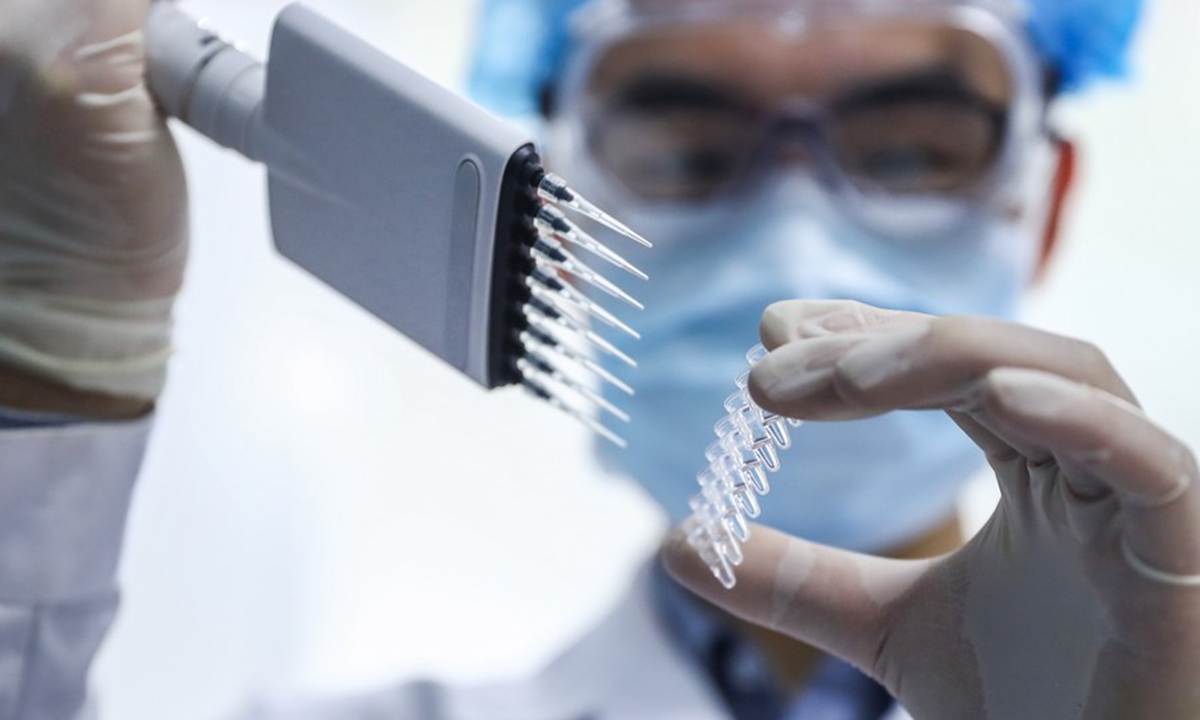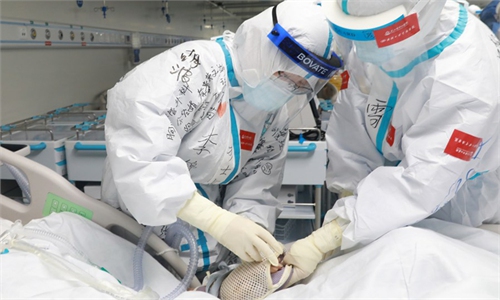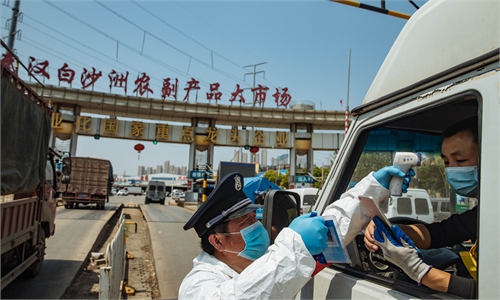Inactivated vaccines developed by China prove efficient, effective: CDC Director Gao Fu

A staff member tests samples of the COVID-19 inactivated vaccine at a vaccine production plant of China National Pharmaceutical Group (Sinopharm) in Beijing, capital of China, April 11, 2020. (Xinhua/Zhang Yuwei)
As different types of COVID-19 vaccines were approved and large-scale inoculations across the world began, Gao Fu, director of the Chinese Center for Disease Control and Prevention (CDC), said that China's decision to develop inactivated vaccines have proven to be efficient and effective.
"But we need to bear in mind that the virus is our common enemy, not countries," Gao stressed on Tuesday.
Currently there are seven types of COVID-19 vaccines engaged in the heated global race. Among the five types developed by China, three front-runners, which are inactivated vaccines, have approached completion of the last-stage of clinical trials, all returning with good results, according to the data acquired, Gao said in an exclusive interview with the Xinhua News Agency on Tuesday.
As for the question that many people have been wondering about - What are the differences between vaccines developed by China and those by the US? Gao replied that China has chosen inactivated vaccines while the US has been developing a new type, called mRNA vaccines.
To explain the differences, Gao said that China started vaccine research and development as early as January, when scientists started selecting samples of coronavirus suited for experiments.
One of the key decisions made at the time was to lend the biological safety level-3 laboratory to China National Biotec Group (CNBG), a subsidiary of China's biopharmaceutical giant Sinopharm, which provided a necessary environment for the development of inactivated vaccines.
Due to the lack of similar laboratories, many countries in the West had to abandon such an approach, Gao said.
"By comparison, they went further down the path by developing mRNA vaccines, a more commonly used solution for patients suffering from cancer, but not for ordinary people," Gao noted, adding that it was the first time for the injection of such a vaccine in a healthy human body, with no previous successful attempts to rule out possible side effects.
"However, we need to bear in mind that it is the virus that is our common enemy, not particular countries. We must unite our efforts to kill the virus, and make vaccines a global public good," Gao stressed.
The inactivated vaccine works by using killed viral particles to expose the body's immune system to the virus without risking a serious disease response, while mRNA ones inject part of the coronavirus' genetic code into the human body, triggering the body to form viral proteins sufficient enough to train the immune system to attack, according to a BBC report in mid-December.
Looking back at the viral origin, Gao said he and other scientists in the field have been speculating about an animal carrier that passed the virus on to humans. However, without firm evidences being found, he is now re-examining whether the coronavirus originated from bats.
The mystery of the viral origin, the asymptomatic infections and the efficacy of vaccines… there are still plenty of unresolved questions concerning the pandemic that brought the world into a turmoil of struggles, for which Gao reminded the public to remain patient and trust science.
Global Times


